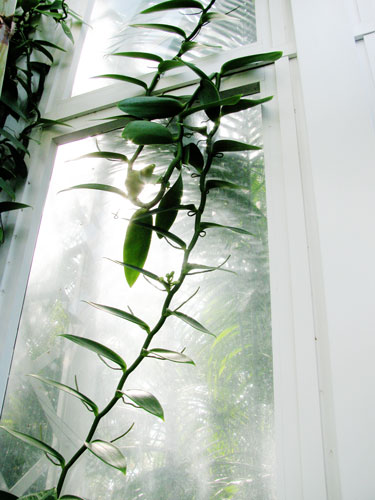Monopodial Orchids
Monopodial orchids are one of the two main growth habits of orchids (sympodial orchids are the other kind.) These plants have a single main stem, which produces a series of leaves at the apical bud at its growth tip. Roots and flower stems emerge at the nodes above each leaf. The stem may occasionally branch, but this is infrequent in most types of orchids.
A monopodial Vanilla orchid. Did you notice the flower stem above one of the leaves?